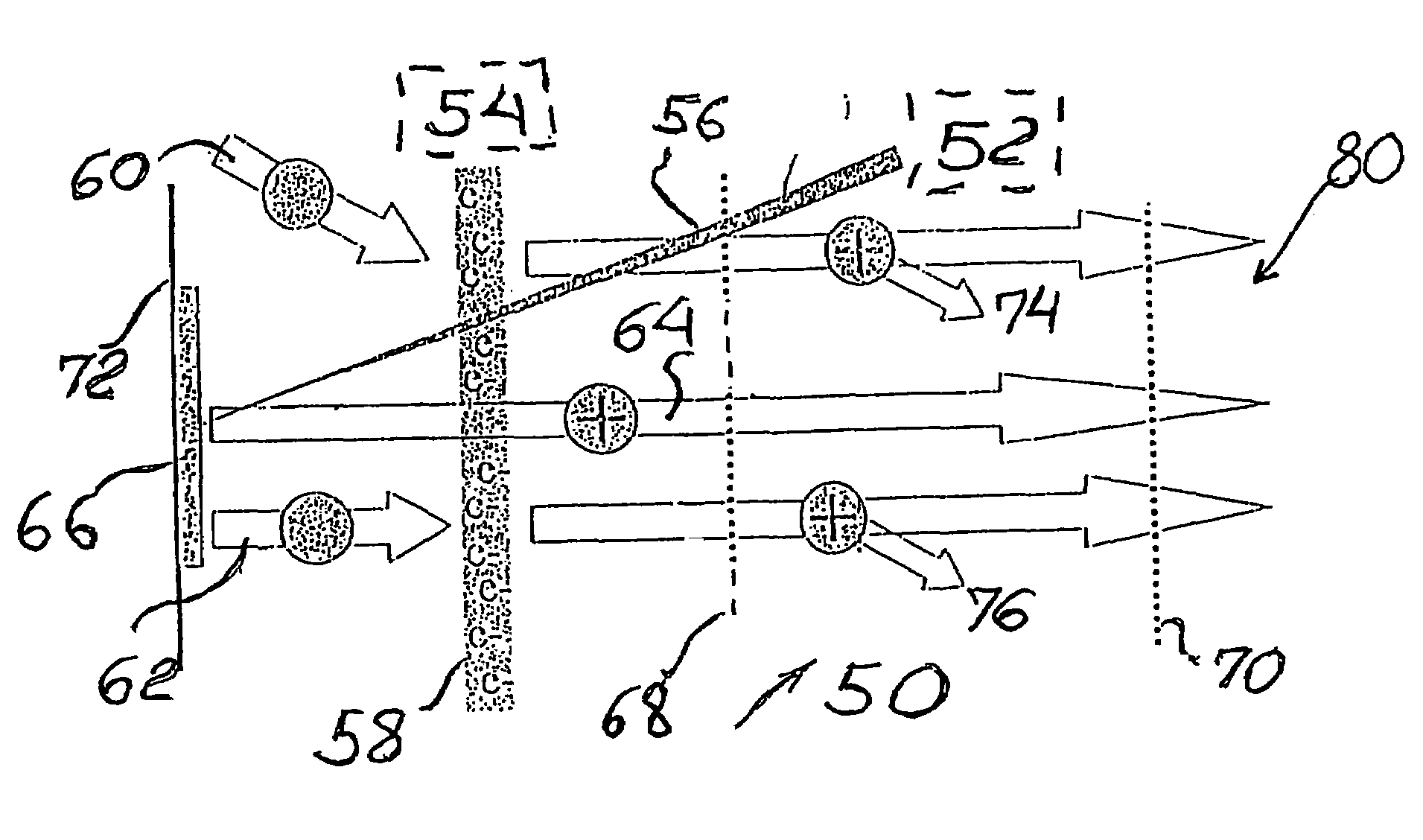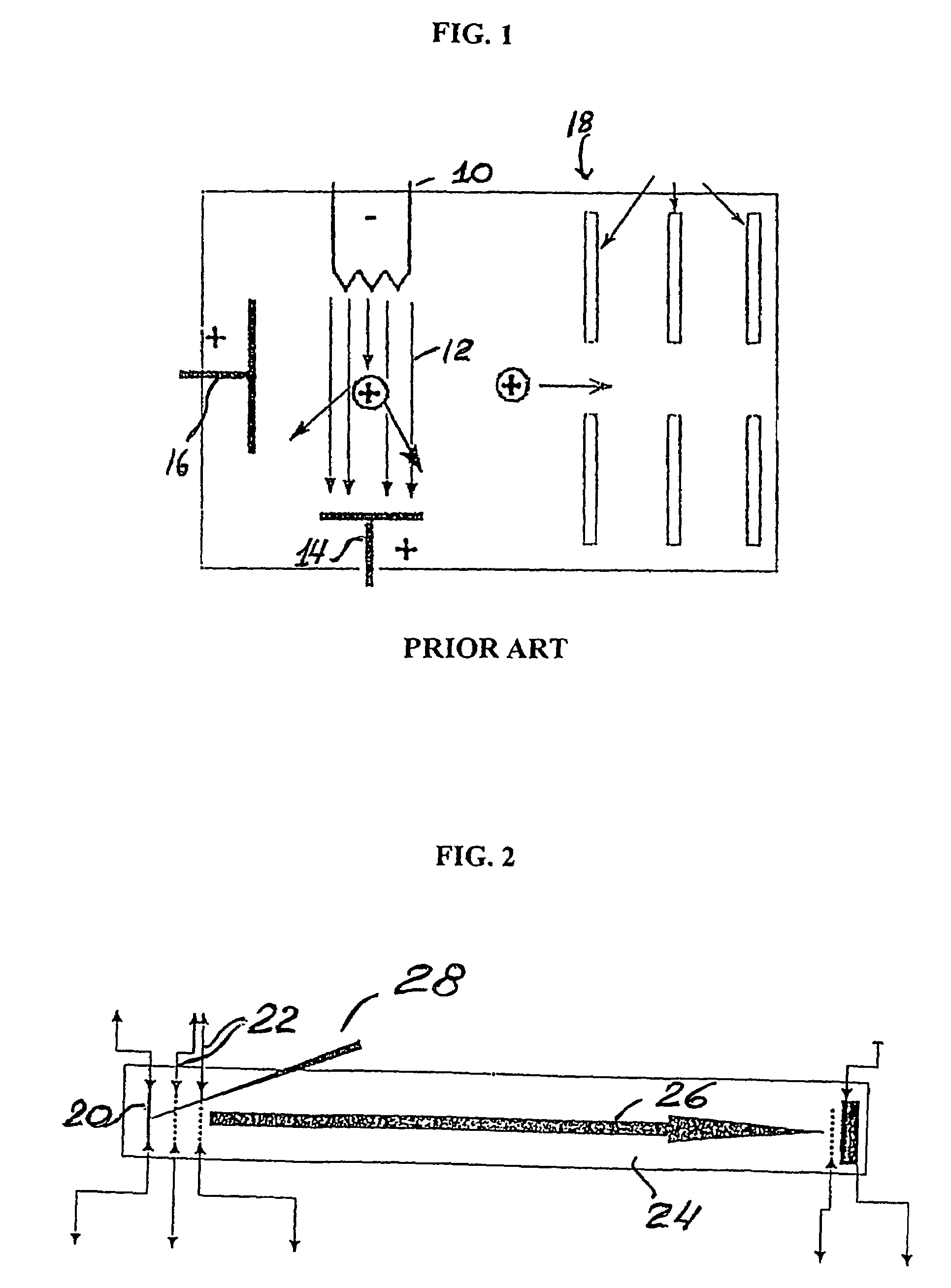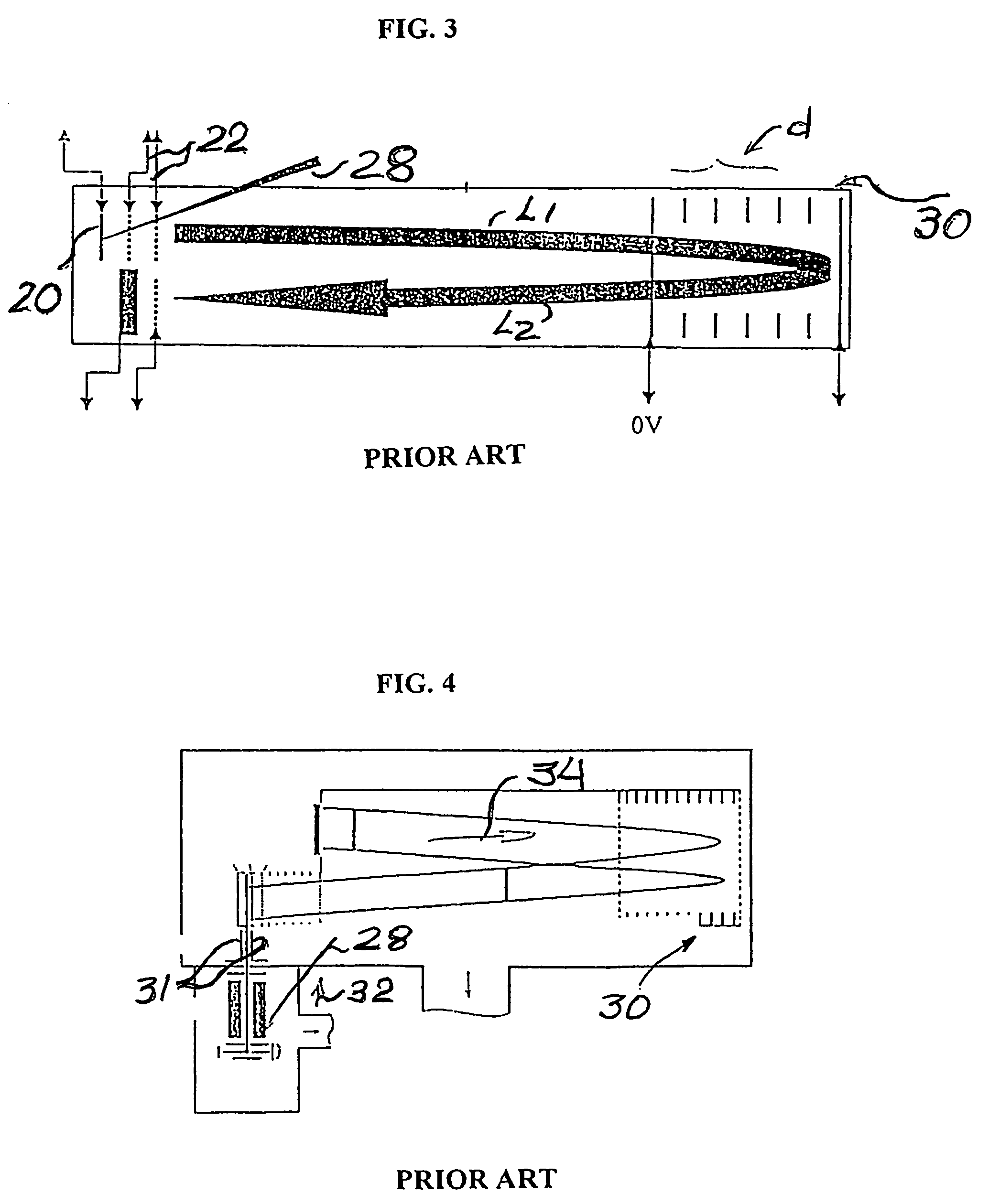Combined chemical/biological agent detection system and method utilizing mass spectrometry
a detection system and biological agent technology, applied in the field of mass spectrometry, can solve the problems of increasing fragmentation, difficult detection and enumeration, and limited use of ei, and achieve the effect of increasing fragmentation
- Summary
- Abstract
- Description
- Claims
- Application Information
AI Technical Summary
Benefits of technology
Problems solved by technology
Method used
Image
Examples
Embodiment Construction
[0054]Referring to FIG. 6, mass spectrometer 50 of the present invention is configured to have a MALDI ionization source 52 and an EI ionization source 54 used together to gain access to additional biological and chemical compounds not accessible by electron impact (i.e. not volatile) or desorbed by MALDI source 52. Thus, the mass spectrometer 50 is configured to carry out a method that increases specificity for correct bioagent identification either directly or by detecting additional biomarkers for biological agents. Although the following discussion relates mainly to a TOF mass spectrometer, it is understood that the TOF configuration is given only for the illustrative purposes of the inventive concept. Other configurations of the inventive instrument can include, but not limited to the quadrupole or triple quadrupole ion trap mass spectrometer, or hybrids such as quadrupole / time-of-flight QTOF, or a Fourier transform mass spectrometer (FTMS).
[0055]As illustrated in FIG. 7, mass ...
PUM
| Property | Measurement | Unit |
|---|---|---|
| pressure | aaaaa | aaaaa |
| drift lengths | aaaaa | aaaaa |
| drift length | aaaaa | aaaaa |
Abstract
Description
Claims
Application Information
 Login to View More
Login to View More - R&D
- Intellectual Property
- Life Sciences
- Materials
- Tech Scout
- Unparalleled Data Quality
- Higher Quality Content
- 60% Fewer Hallucinations
Browse by: Latest US Patents, China's latest patents, Technical Efficacy Thesaurus, Application Domain, Technology Topic, Popular Technical Reports.
© 2025 PatSnap. All rights reserved.Legal|Privacy policy|Modern Slavery Act Transparency Statement|Sitemap|About US| Contact US: help@patsnap.com



